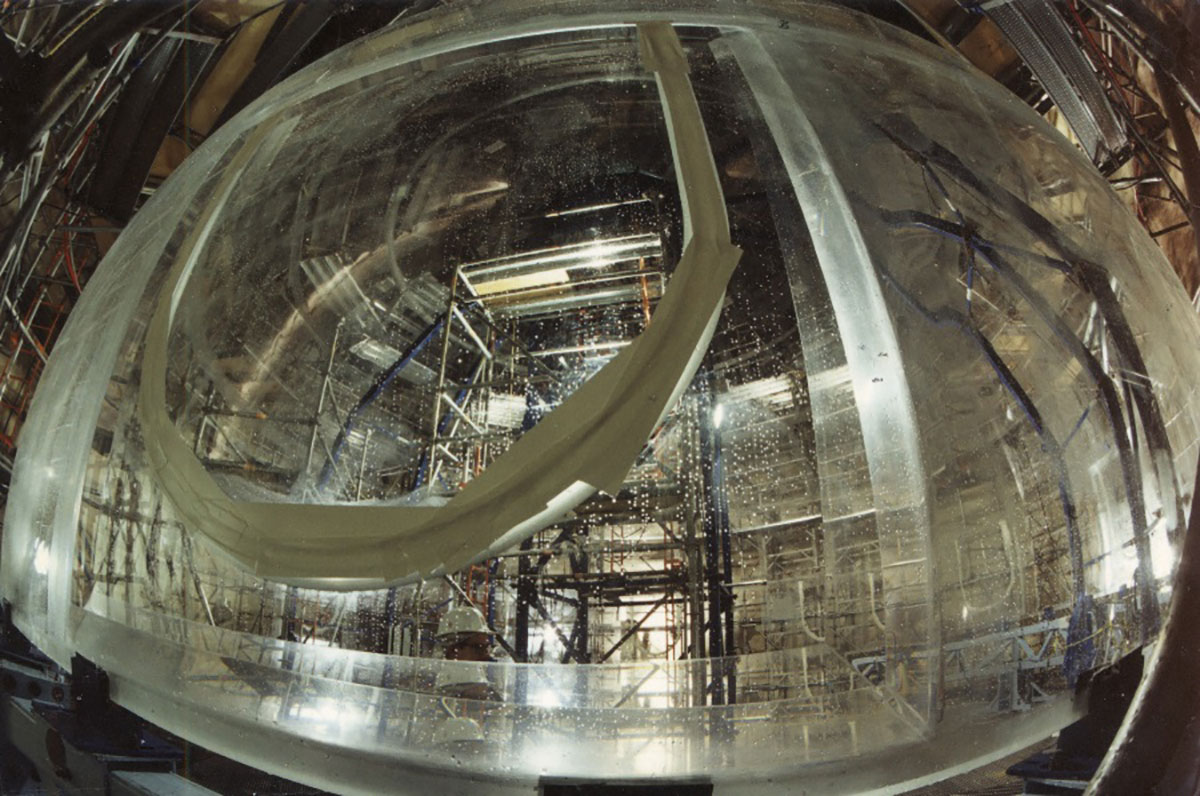


The acrylic sphere will be filled with an organic liquid much like mineral oil, which can detect neutrinos of a much lower energy than the SNO could. Having finished the recording element of the experiment, the heavy water has been drained out as the detector is being upgraded for the SNO+ experiment. Roughly 8 to 10 neutrino strikes are detected each day, and a single stray photon can cause a false event. They are notoriously difficult to detect. (The $330 million dollars worth of heavy water is on loan from Atomic Energy of Canada Limited.) SNO, as it’s known, is situated in the deepest part of the nickel mine, helping to shield the detector from cosmic rays.ĭespite the fact that billions of neutrinos stream through one’s body every second, they can only be detected when they strike an atom’s nucleus, giving off light. Inside the chamber is an enormous Buckminster Fuller sphere studded with 9600 photomultiplier tubes, which itself surrounds a forty-foot acrylic sphere filled with 1,000 tons of heavy water. The walls of the chamber are lined with plastic to help to keep down the radiation levels from uranium and thorium in the surrounding rock. The entire chamber is filled with water, and its sole purpose is to detect solar neutrinos. The detector is located in the largest man made underground cavity in the world: a barrel 108 feet deep and 72 feet across forming a chamber roughly the size of a 10 story building. It does not store any personal data.More than a mile underground in an Ontario mine is the Sudbury Neutrino Observatory. The cookie is set by the GDPR Cookie Consent plugin and is used to store whether or not user has consented to the use of cookies. The Sudbury Neutrino Observatory (SNO) is designed to detect neutrinos by several means in order to shed light on such problems as the Solar Neutrino. The cookie is used to store the user consent for the cookies in the category "Performance". This cookie is set by GDPR Cookie Consent plugin. The cookies is used to store the user consent for the cookies in the category "Necessary". The cookie is used to store the user consent for the cookies in the category "Other. The cookie is set by GDPR cookie consent to record the user consent for the cookies in the category "Functional". The cookie is used to store the user consent for the cookies in the category "Analytics". These cookies ensure basic functionalities and security features of the website, anonymously. Necessary cookies are absolutely essential for the website to function properly. Couldn’t have done it without acrylic vessel!” The Sudbury Neutrino Observatory is a second generation water Cherenkov detector designed to determine whether the currently observed solar neutrino deficit. Doe of the Cenpa University of Washington said, “King Arthur go the Nobel…. won the 2015 Noble Prize for Physics for the discovery of neutrino oscillations, which shows that neutrinos have mass. This site describes the basics of its operation and lists some research results. Reynolds Polymer was on site for approximately one and half years and this project was completed in December of 1997. The Sudbury Neutrino Observatory is an underground facility designed to detect solar produced neutrinos by means of a Cherenkov detector. The onsite portion for this project was very unique as it had to be constructed 2km below the surface of the earth in a clean room. The governments of Canada, the United Kingdom and the United States, teamed up for this project, selecting Reynolds Polymer to construct this sphere because of our ability to provide the design, engineering, manufacturing, and the required onsite bonding and installation underground. Adding to the complexity of this 12.2m diameter sphere it required 470m of bonds, the majority being completed onsite. This acrylic sphere was the first of its kind with a varying thickness of 5cm to 10cm and weighing 74,000 pounds. This highly engineered Reynolds Polymer acrylic sphere was used to understand the particle physics of neutrinos. Project, is located in Sudbury, Ontario, Canada underground at the S.N.O. The Sudbury Neutrino Observatory, or S.N.O.


 0 kommentar(er)
0 kommentar(er)
